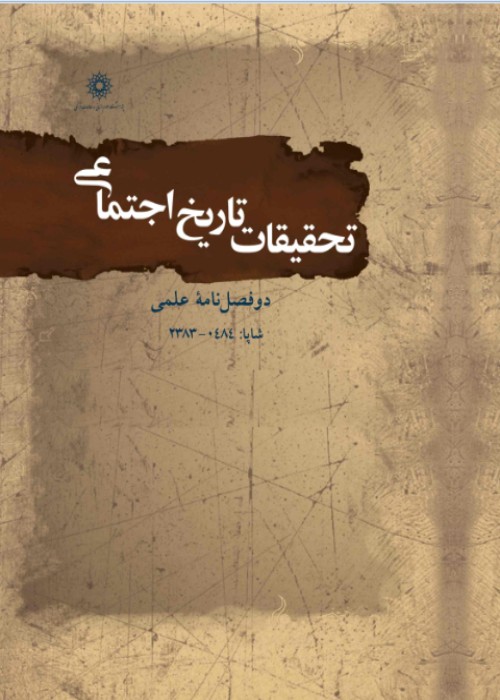The Social and Economic Backgrounds and the Formation Process of Rug Weaving Companies in the City of Qazvin
Author(s):
Article Type:
Research/Original Article (دارای رتبه معتبر)
Abstract:
In the middle of the Qajar period, multinational companies took over the Iranian carpet industry. These companies ceased to operate when World War I began. Thus, by the beginning of the Pahlavi period, the conditions were ripe for ousting multinational companies. Subsequently, with governmental support, Iranian manufacturers established rug-weaving workshops in many cities, including Qazvin, where several carpet companies commenced working, the most famous of which were "Qazvin’s Etemaad Company’s Carpet Weaving Workshop" and "Salamat". The aim of this research is to identify the socioeconomic settings in which carpet weaving companies formed in Qazvin during the above-mentioned period, as well as studying their development process. The authors have tried to answer these questions: What social and economic backgrounds led to the foundation of Qazvin’s rug-weaving companies? How were carpet production’s process and methods in these companies? The research is done with a sociohistorical approach and with qualitative analysis of oral data and first-hand documents. The results show that between 1918 and 1950 weaving high-quality carpets became prosperous in Qazvin, due to various factors like its proximity to Tehran and important rug-weaving centers, the assembly of investors, and governmental supports. But the American recession, and World War II, reduced the demand in Western markets; therefore, carpet production was also reduced. After the Russian squad’s arrival in Qazvin, Etemaad almost ceased to operate. Being afraid of the financial support of Qazvini notables for sociopolitical movements, the Russians exiled Etemaad’s founders to Baku in 1942. Despite the efforts made after that by some certain producers, the carpet production of Qazvin was over by the beginning of the 50s. In the course of sociopolitical changes, the workshop rug of Qazvin also evolved. In weaving techniques and artistic aspects (design, pattern and color), Qazvin rugs followed neighboring rug-weaving centers, such as Kashan and Sarouq.
Keywords:
Language:
Persian
Published:
Tahqiq?t-e T?rikh-e Ejtem?’i, Volume:13 Issue: 1, 2023
Pages:
149 to 191
magiran.com/p2678693
دانلود و مطالعه متن این مقاله با یکی از روشهای زیر امکان پذیر است:
اشتراک شخصی
با عضویت و پرداخت آنلاین حق اشتراک یکساله به مبلغ 1,390,000ريال میتوانید 70 عنوان مطلب دانلود کنید!
اشتراک سازمانی
به کتابخانه دانشگاه یا محل کار خود پیشنهاد کنید تا اشتراک سازمانی این پایگاه را برای دسترسی نامحدود همه کاربران به متن مطالب تهیه نمایند!
توجه!
- حق عضویت دریافتی صرف حمایت از نشریات عضو و نگهداری، تکمیل و توسعه مگیران میشود.
- پرداخت حق اشتراک و دانلود مقالات اجازه بازنشر آن در سایر رسانههای چاپی و دیجیتال را به کاربر نمیدهد.
In order to view content subscription is required
Personal subscription
Subscribe magiran.com for 70 € euros via PayPal and download 70 articles during a year.
Organization subscription
Please contact us to subscribe your university or library for unlimited access!


